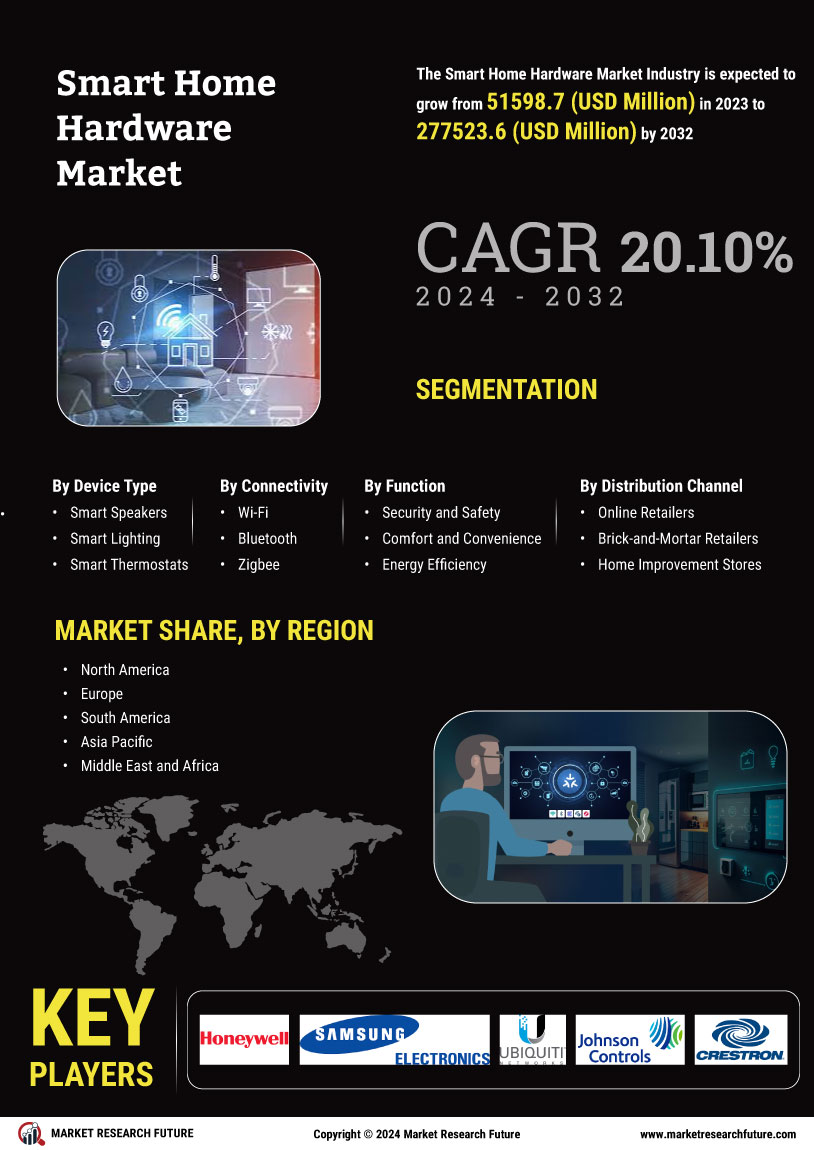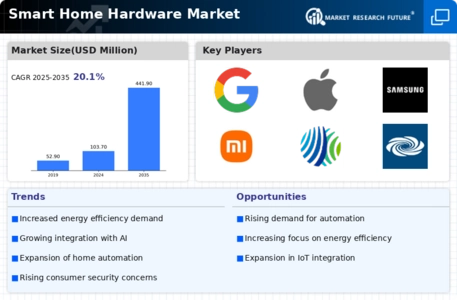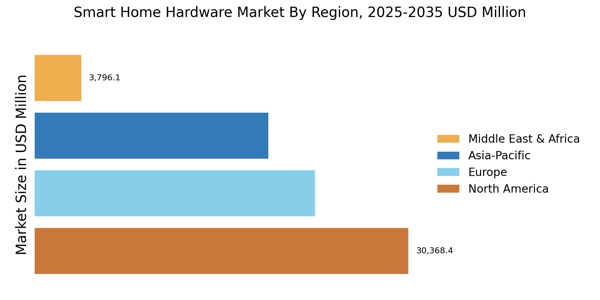The Smart Home Hardware Market is currently characterized by a dynamic competitive landscape, driven by rapid technological advancements and increasing consumer demand for automation and connectivity. Major players such as Amazon (US), Google (US), and Samsung (KR) are at the forefront, each adopting distinct strategies to enhance their market presence. Amazon (US) continues to leverage its extensive ecosystem, integrating smart home devices with its voice assistant, Alexa, thereby fostering a seamless user experience. Google (US), on the other hand, emphasizes innovation through its Nest product line, focusing on energy efficiency and smart home integration. Samsung (KR) is strategically positioned with its SmartThings platform, which aims to unify various smart devices under a single interface, enhancing user convenience and interoperability. Collectively, these strategies not only intensify competition but also drive the market towards greater innovation and consumer-centric solutions.
In terms of business tactics, companies are increasingly localizing manufacturing and optimizing supply chains to enhance efficiency and reduce costs. The Smart Home Hardware Market appears moderately fragmented, with a mix of established players and emerging startups. This fragmentation allows for diverse offerings, yet the influence of key players remains substantial, as they set trends and standards that smaller companies often follow. The collective actions of these major companies shape the market structure, fostering an environment where innovation and strategic partnerships are paramount.
In August 2025, Amazon (US) announced the launch of a new line of smart home security devices, which includes advanced AI-driven features for real-time monitoring and alerts. This strategic move is significant as it not only expands Amazon's product portfolio but also positions the company as a leader in the security segment of the smart home market. By integrating AI capabilities, Amazon (US) enhances the functionality of its devices, appealing to consumers' growing concerns about home security and privacy.
In September 2025, Google (US) unveiled a partnership with several energy providers to promote its Nest Thermostat as a tool for energy savings. This collaboration is strategically important as it aligns with the increasing consumer focus on sustainability and energy efficiency. By positioning its products as not only smart but also environmentally friendly, Google (US) taps into a growing market segment that prioritizes eco-conscious living, thereby enhancing its competitive edge.
In July 2025, Samsung (KR) expanded its SmartThings platform to include compatibility with a wider range of third-party devices, thereby enhancing its ecosystem. This strategic action is crucial as it fosters interoperability, allowing consumers to integrate various smart devices seamlessly. By doing so, Samsung (KR) strengthens its market position and encourages consumer loyalty, as users are more likely to invest in a platform that supports a diverse array of products.
As of October 2025, the competitive trends in the Smart Home Hardware Market are increasingly defined by digitalization, sustainability, and the integration of artificial intelligence. Strategic alliances are becoming more prevalent, as companies recognize the value of collaboration in enhancing product offerings and market reach. Looking ahead, competitive differentiation is likely to evolve, shifting from traditional price-based competition to a focus on innovation, advanced technology, and supply chain reliability. This transition suggests that companies that prioritize these aspects will be better positioned to thrive in an increasingly competitive landscape.

















Leave a Comment